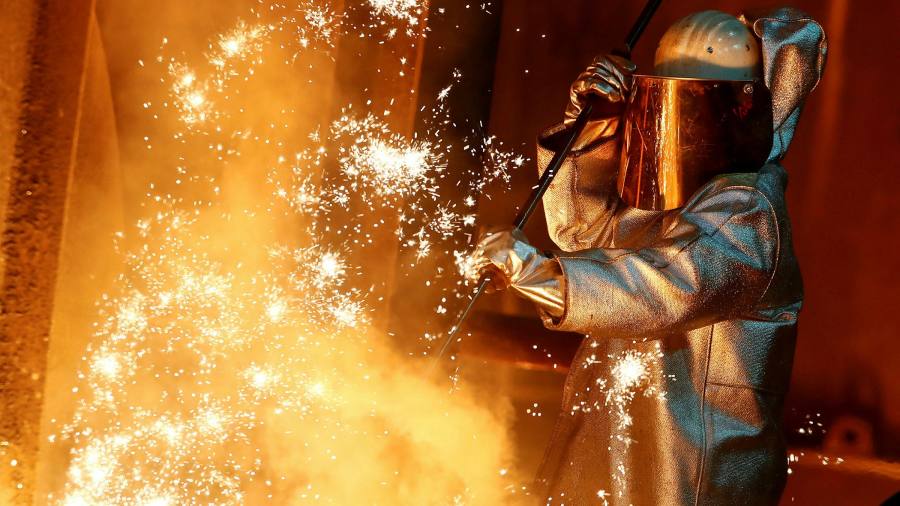[ad_1]
After what has been dubbed a lost decade, commodity prices are at last starting to see a revival as investors look to economic recovery.
Commodities have had a rough few years, hit by oversupply and crushed by economic fears as the Covid-19 pandemic broke out.
But now prices are being propelled higher amid hopes that a robust post-pandemic recovery during 2021 will release pent-up consumer and industrial demand for raw materials.
Oil prices rose above $60 a barrel this week while copper hit an eight-year high. A broad index of commodity prices and one that measures industrial metals have both appreciated 17 per cent since November, when Pfizer announced its Covid vaccine.
Commodity prices still remain well shy of the high that crowned the previous “super cycle†in July 2008, but they are approaching the more recent peaks of 2018. Some analysts and investors are now talking about a bull run for commodities and questioning whether a repeat of the stellar streaks of the 1970s and 2000s beckons.
“Commodity super cycles tend to occur after periods of loose central bank policy and run for about a decade,†said Chris Watling, chief market strategist and founder of Longview Economics. “Commodities peaked relative to equities a decade ago and now they are very cheap and below their levels seen in 1969 and 1998 before prior super cycles began.â€
At present, the bull case for commodities has a significant tailwind from the apparent willingness of governments and central banks to atone for their fiscal austerity and early tightening of monetary policy in the wake of the 2008 financial crisis.

There have been warnings from economists such as Lawrence Summers that this could lead to an overheating economy that results in higher inflation and financial instability. But for now governments want to spend big and that is good news for commodity demand.
Some commodities are also benefiting from the rise of renewable energy and broader acceptance of electric vehicles. The trend will sap demand for fossil fuels but also will drive a strong cycle for copper, nickel, silver and platinum — important materials for batteries and for the expansion of electrical power grids and charging stations. It will take some time for new production to rise to meet demand.
“New projects need lead times of four to 10 years, and supply constraints will be tested by an aggressive spending spree,†says Michel Salden, senior portfolio manager at Vontobel Asset Management. “Prices for green commodities need to rise by at least 20-30 per cent to secure production capacity in 2025 and beyond.â€
For investors holding a portfolio of mostly bonds and equities, boosting commodity exposure makes strategic sense. If inflation does rise as the global economy recovers, that can favour owning “real†assets such as property and commodities.
Current rich equity valuations leave little margin for error in terms of corporate earnings and growth disappointments in the next few years. As for low yielding bonds, they provide no protection from a bout of rising inflation.
“We would recommend more exposure to commodities because most portfolios seem to be overly reliant on expectations of a future environment of good economic growth and benign inflation,†said Dan Villalon, principal and co-head of portfolio solutions group at AQR Capital Management.
A portfolio split 60/40 between global equities and US high quality bonds has generated a five-year annualised return of 10.2 per cent — 8.2 per cent after inflation — according to Northern Trust. Lofty valuations for both types of assets at the moment is why the bank estimates an annual gain of 3.6 per cent over the next five years and before inflation is deducted.
At such valuation levels, the stabilising forces within the 60/40 portfolio seen in recent past might be less effective. In past bouts of turmoil when equities have fallen sharply, government bonds have rallied on haven buying. Bonds may now have less room to gain.
Commodities might not offer protection against broader market turbulence but they have a record of outperformance when inflation picks up. In the super cycle that defined the 1970s, they provided a hedge as oil price shocks forced Wall Street’s Nifty 50 growth stocks down to earth.
In the wake of the dotcom bust of 2000 when share prices also fell sharply, commodities prospered, benefiting from China’s voracious appetite for raw materials.
Picking the right type of commodities will matter given the green energy push, with the rise of electric vehicles and demands placed on power grids.
For investors trying to ascertain the right portfolio mix, there is solace that adding a dash of commodities, rather than a sizeable chunk, to their holdings of bonds and equities should prove sufficient.
“One benefit of commodities is that they have higher volatility than most other asset classes, and therefore you don’t need to buy a lot of exposure in order to gain returns that are meaningfully diversifying to the rest of your portfolio,†said AQR’s Villalon.
[ad_2]
Source link






